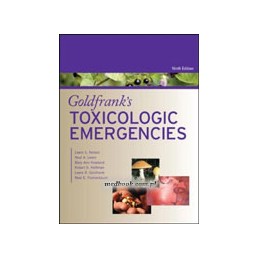- Obniżka


 Dostawa
Dostawa
Wybierz Paczkomat Inpost, Orlen Paczkę, DHL, DPD, Pocztę, email (dla ebooków). Kliknij po więcej
 Płatność
Płatność
Zapłać szybkim przelewem, kartą płatniczą lub za pobraniem. Kliknij po więcej szczegółów
 Zwroty
Zwroty
Jeżeli jesteś konsumentem możesz zwrócić towar w ciągu 14 dni*. Kliknij po więcej szczegółów
The most trusted, rigorous, and up-to-date toxicology resource and educational companion available – now in full color
A Doodys Core Title ESSENTIAL PURCHASE for 2011!
Goldfranks Toxicologic Emergencies continues to be the source you can turn to first for any poisoning or overdose. The text provides clear information on every aspect of toxicologic emergencies, from pharmacology to clinical presentation to management.
Fully referenced and featuring a consistent organization, Goldfranks begins with an in-depth examination of general principles of medical toxicology. It then progresses to the biochemical principles and molecular basis of toxicology, and provides detailed insight into how xenobiotics affect vital signs, organs, and systems throughout the body. Next, a wide spectrum of clinically important exposures -- including drugs, plants, metals, household products, occupational and environmental xenobiotics are covered within logical categories for easy access to information. Finally, the book concludes with sections on principles of practicing clinical toxicology in todays challenging healthcare environment.
NEW TO THIS EDITION
Opis
Indeks: 31300
Autor: Colin D. Binnie
EEG, Paediatric Neurophysiology, Special Techniques and Applications, Volume 2
Indeks: 93541
Autor: Michelle G. Craske
Workbook
